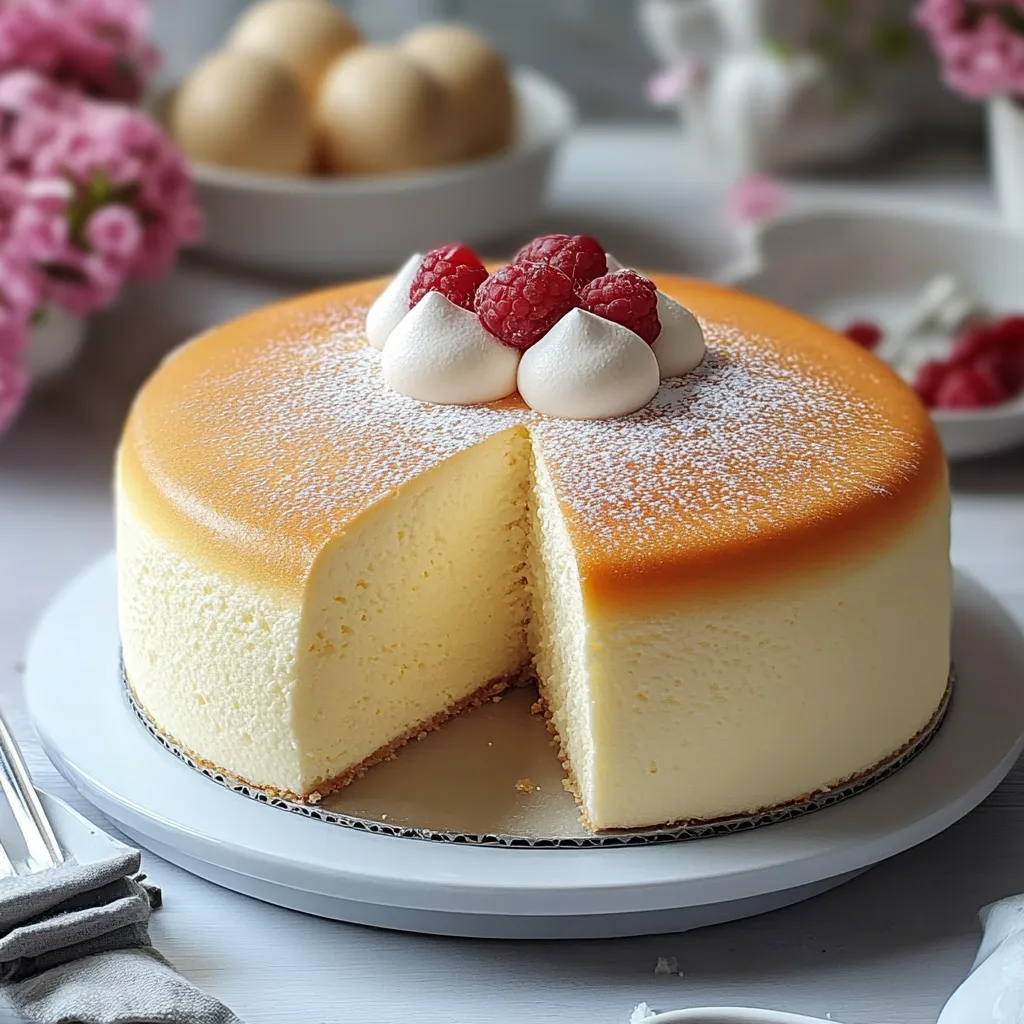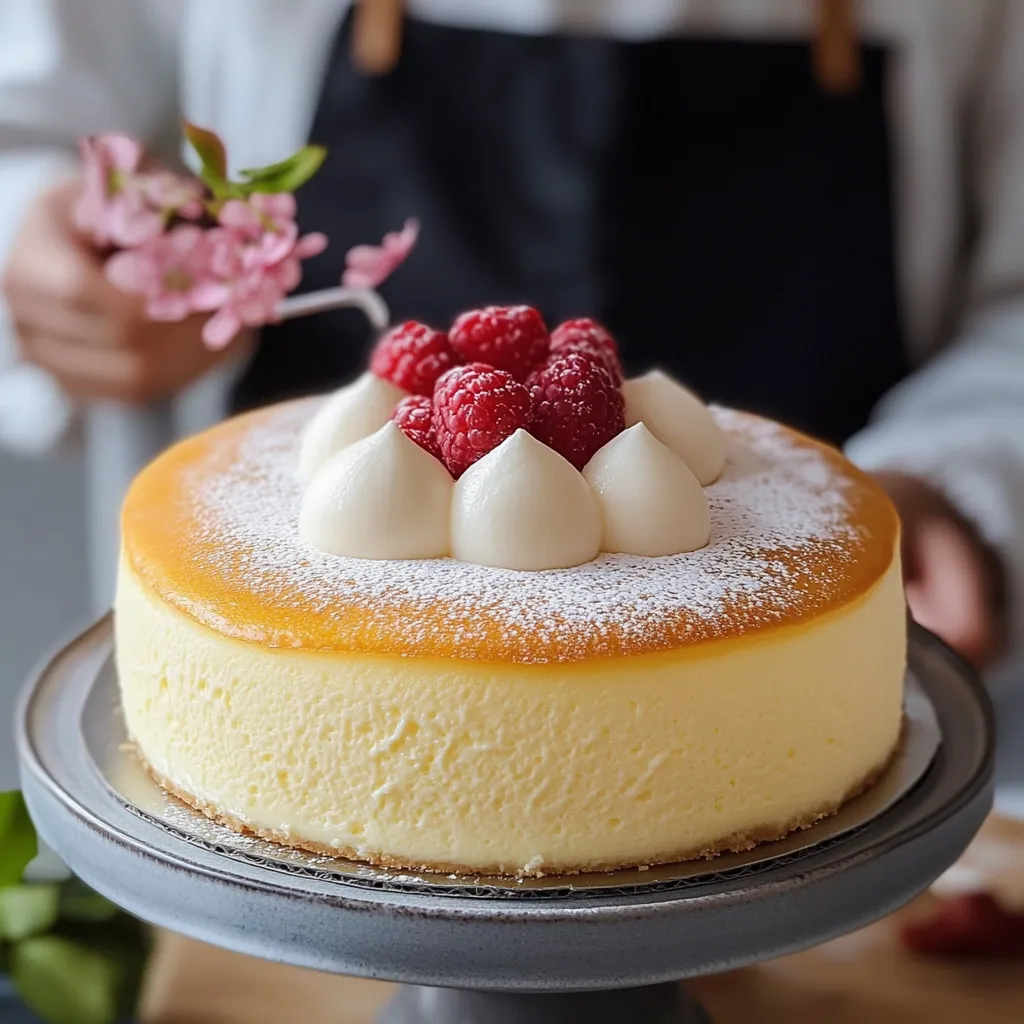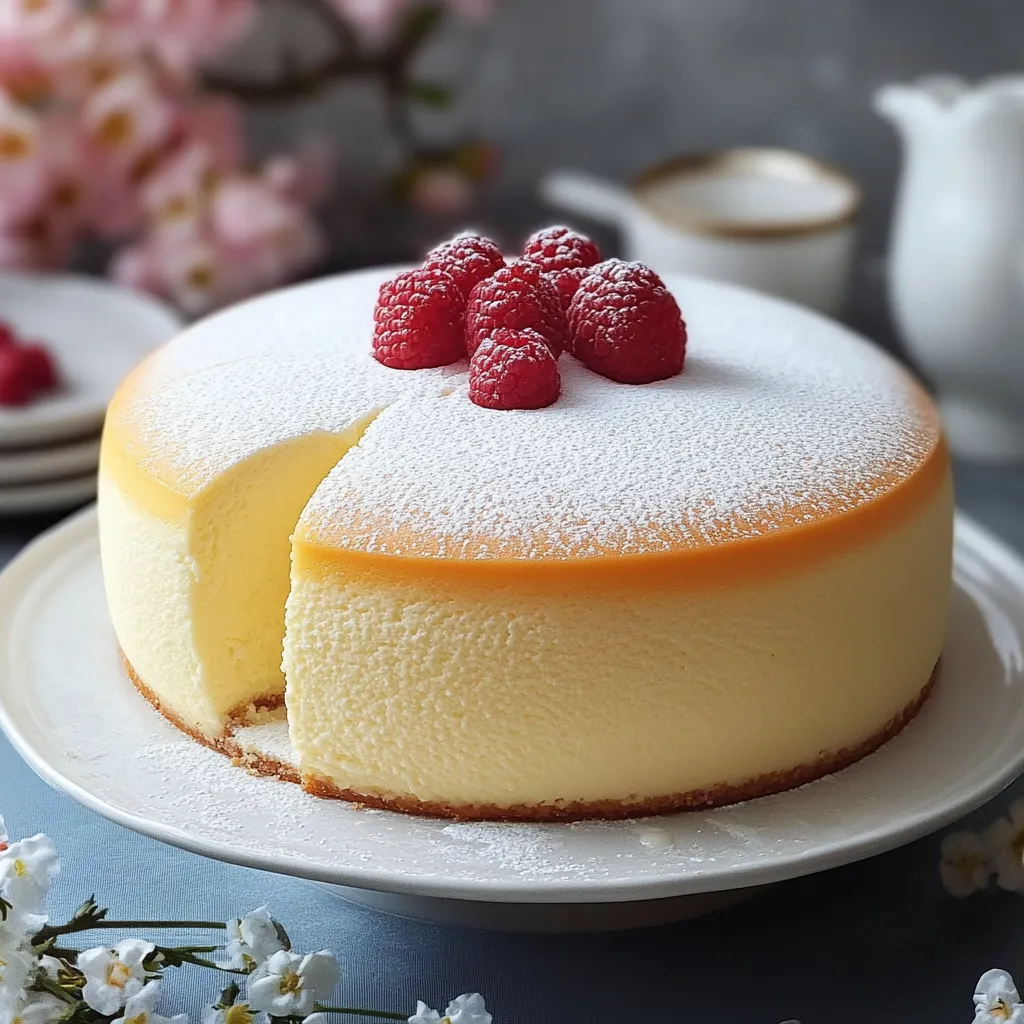 Pin it
Pin it
Cutting into a cloud-like Japanese cheesecake is like witnessing kitchen wizardry up close. This dessert charms everyone with an airy softness that wobbles from the gentlest touch, but it still keeps its shape, looking great on your plate. Instead of being heavy and super creamy, like the usual American version, this one combines tangy cream cheese with the fluffiness of a soufflé. Every forkful is gently sweet and melts away before you notice, making you want seconds right after your first bite.
I first stumbled upon this while wandering bakeries around Tokyo, and I’ll never forget watching a local pro put together this crowd favorite. It took a bunch of tries and tweaking back home to get it right, but once I nailed the perfect balance and timing, this turned into a regular treat for special days. My family keeps opting for this one whenever there’s something to celebrate—they like its gentle sweetness more than heavier cakes.
Irresistible Essentials
- Lemon juice: Besides giving it a little zing, it helps keep the egg whites sturdy for perfect meringue
- Cake flour: Less protein here means you'll get a softer bite compared to using regular all-purpose flour
- Eggs: Make sure you separate them super well—no yolk sneaking in—so your meringue turns out right
- Cream cheese: Pick (and soften) a good, full-fat brand. Let it come to room temp so it mixes up nice and smooth—nobody wants lumps
Step-by-Step Adventure
- Cooling patience:
- Slowly cool the cheesecake by turning the oven off and cracking the oven door open a bit before moving it onto the counter. This stops the cake from sinking.
- Baking made easy:
- Set your pan in a water bath and let it bake at a medium temp so it sets up without burning or cracking anywhere.
- Gentle blending:
- Add your meringue in three goes, folding softly with a big spatula to keep all that fluffy air in.
- Meringue tricks:
- Start beating egg whites with cream of tartar till they foam nicely, then slowly sprinkle in sugar. Watch for shiny, stiff peaks that barely flop over.
- Dry mix folding:
- Sift in cake flour and cornstarch, then gently fold those in. Cutting across with your spatula keeps the fluffiness and makes sure you don’t find dry patches.
- Liquids go in:
- Mix in your milk and flavors slowly, keeping the speed low so you don’t whip in too much air by accident.
- Egg yolk time:
- Add each yolk just one at a time, letting it blend in fully each round before the next goes in. You want the mix to stay nice and stable.
- Cream cheese start:
- Beat the softened cream cheese on its own until creamy, then add sugar little by little. You’ll get the smoothest batter this way, with no weird chunks.
- Water bath ready:
- Wrap the pan in heavy-duty foil—double up so water can’t sneak in anywhere, even at the seams.
 Pin it
Pin it
After I finally got this right, my grandma came to visit from Japan. She’s not usually into desserts that lean Western, but when she tasted this, she just smiled, closed her eyes, and said 'oishii' (so good). It was the best moment—proof that I’d pulled off the real magic of this cake that brings together different baking styles.
Tasty Twists
Shake things up and try all sorts of flavors without losing that melt-in-your-mouth texture. Swapping in matcha powder gives you a gorgeous green version and a grown-up tea vibe. If you love citrus, mix in grated yuzu or Meyer lemon zest for a pop of brightness. Want more aroma and little black specks? Scoop in some vanilla bean paste instead of extract for a richer look and flavor.
 Pin it
Pin it
I got into making Japanese cheesecake after seeing a viral clip online, but the more I practiced, the more I respected how much care each step needs. Every time I bake it, I’m reminded how simple ingredients can turn stunning if you treat them right. The best part? Watching friends and family realize this isn’t the plain old cheesecake they thought they knew—it’s lighter, fluffier, and totally unexpected.
Frequently Asked Questions
- → Why did my Japanese Cheesecake crack on top?
- Usually, a cracked top comes from drastic changes in heat. Let your cake slowly cool inside the oven with the door open a bit. Double-check your oven temp and always use a water bath for best results.
- → Can I make Fluffy Japanese Cheesecake without a water bath?
- It's pretty hard to get the light, bouncy texture without soaking the pan in water. Skipping that step makes it dense and likely to split on top.
- → Why did my Japanese Cheesecake deflate after baking?
- If your cake sinks a lot, it's often because the egg whites weren't whipped firmly, too much mixing knocked out the air, or you pulled it out of the oven too soon. Take your time cooling it off to keep it puffy.
- → Can I use all-purpose flour instead of cake flour?
- You can swap in all-purpose flour, but it makes the cake a bit heavier. Try mixing 54g all-purpose flour and 6g cornstarch, sift well, and you'll get closer to the original.
- → How should I store leftover Japanese Cheesecake?
- Just pop any extras into an airtight box in your fridge for up to three days. It'll get firmer and cake-like, but leaving it out for 20 minutes softens it up again.
